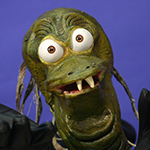You probably can't do a thing about the animation but you can certainly adjust the brakes. It's a pet peeve of mine when developers of tail-draggers don't set up the brakes properly and I always adjust mine so that they are more realistic for the aircraft type and yes, some would nose over (normally the single seat fighters or light GA) if you got too heavy on the brakes and weren't pulling back on the stick at the same time to 'nail the tail' to the ground.Paul K wrote:By the way, for those who have the Anson, is the elevator trim wheel animation reversed ? Shouldn't it rotate backwards to elevate the nose ? This one is the other way round.
The brakes are a bit sharp too - I've almost nosed over several times. I'm sure there's a way to adjust this in the config.
One problem is that MSFS only has one parameter for the brakes and that has to work with with everything from a Piper Cub to a 747. To get around this MS introduced a 'brake scalar' so that it can be adjusted to suit but unfortunately a lot of developers just leave the value at the default 1.0 which is way too strong for anything less an airliner. A second problem is related to how the user applies the brakes, toe brakes as fitted to rudder pedals are far more sensitive than using a keyboard command which is basically just full on or off.
To adjust your brake value look in the aircraft.cfg file for the [Brakes] section and then check the value for the 'toe_brakes_scale = ' line and if it says 1.0 then reduce it by a small amount (i.e. to 0.90 which is really 90% of full brakes) and then save the file and test. Rinse and repeat until you get a value you are happy with but most of my tail-draggers are between 0.6 and 0.9 depending on aircraft type.
While you are in the [Brakes] section it would pay you to check if the following line is also present: differential_braking_scale = 1.0
This allows you to have differential braking so that you can steer on the ground by using the brakes as well as via the rudder. Many developers omit that line and if it's missing on your aircraft then just copy and paste it in and then save the file.
Hope those suggestions help you out.







